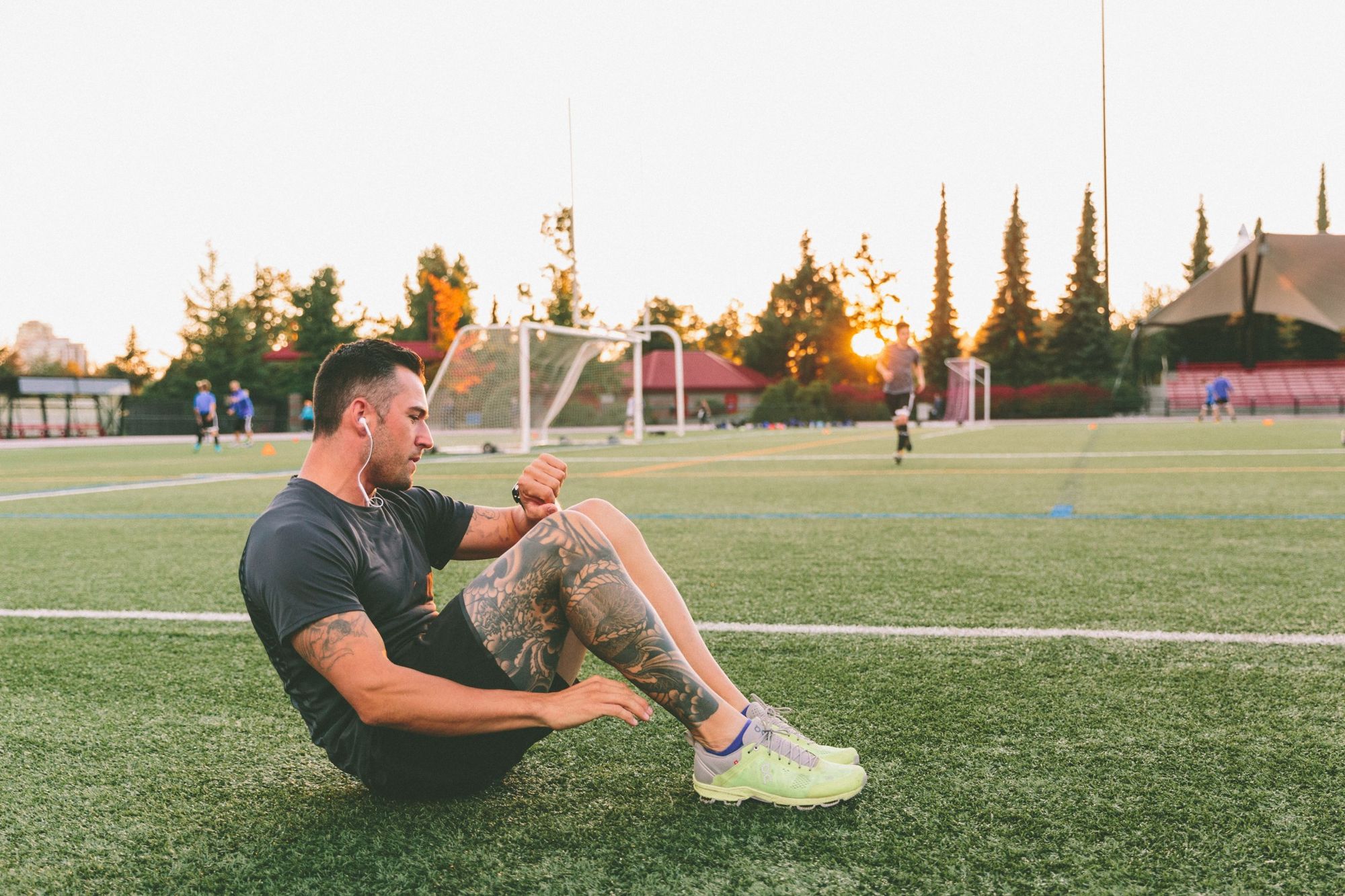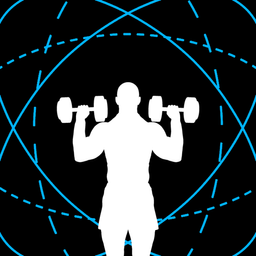5 Little-Known, Non-Boring Exercise Benefits You Need to Know
Exercise benefits: better physical and emotional health. But you already know that — so let's un-borify things with 5 little-mentioned benefits.

Exercise benefits your physical and mental health; we’re talking everything from a lower risk of all-cause mortality to better daily well-being. *snoring sounds ensue*
Um, ExCUSe YoU? Are you falling asleep (or asleep)?! 🤨
Well, TBH, I wouldn’t blame you if you were.
We’ve run through the usual list of exercise benefits so many times that it’s starting to feel as dry as the turkey leftovers from dinner at Thanksgiving. So, why don’t we cover something a little different today?
Here are 5 exercise benefits you’ve probably never heard of before — but should.
#1: Good times in bed 🏩
Starting with a bang (*ahem* sorry, couldn't resist), it turns out that exercise is great at enhancing pleasure in the bedroom.
For both sexes:
OK, but how does exercise put you in the ~mood~? There are a few theories; researchers think exercise:
- Enhances blood flow to the genitals
- Preserves autonomic flexibility (the ability of your central and peripheral systems to support adaptation to environmental demands), benefitting cardiovascular health and mood
- Encourages a positive body image — when you feel better about your body, you’re more likely to initiate and/or agree to get busy between the sheets
Ultimately, though, why exercise benefits sexual function doesn’t matter as much as simply knowing that it does.
🔞 So, take this as your sign to get busy exercising … so you can get busy on the bed, sofa, floor (busy indeed!)
#2: Greater productivity levels
The benefits of exercise aren't limited to the bedroom.
It extends to your office, too.
According to a 2023 study published in Personnel Psychology, prioritizing physical activity could help improve your work productivity and, in turn, performance by:
- Boosting your ability to process information more effectively (honestly, unsurprising, given exercise’s benefits on brain health)
- Improving your attention to work tasks and ability to maintain laser-sharp focus
- Increasing your self-efficacy (i.e., your belief in your ability to complete a task or achieve a goal)
#3: Reverse pre-diabetes
For the uninitiated, pre-diabetes is when your blood sugar levels are higher than normal but not high enough yet to be diagnosed as type 2 diabetes.
Sidenote: is there any benefit to monitoring blood sugar levels in real-time? Find out here:

Does the “yet” sound ominous?
It should. Research suggests that up to 70% of individuals with diabetes will eventually develop type 2 diabetes, a chronic disease that’s associated with many health complications, including:
- Dementia
- Heart and blood vessel disease
- Kidney disease
- Nerve damage in limbs
- Eye damage
But here’s something that’ll (hopefully) lighten things up: a 2017 study published in PLOS One. The researchers recruited 170 sedentary, overweight/obese adults with pre-diabetes and had them complete a supervised 3-month resistance training program (2x/week).
Guess what they found?
After 3 months of resistance training, 34% of participants were no longer prediabetic!
Of course, you might be thinking, “34%? But that’s not 100%?”
Yes. It isn’t, and that’s expected. Resistance training could do wonders for your blood sugar levels, but it’s not a magical cure-all.
To further decrease your risk of pre-diabetes progressing into type 2 diabetes, ideally, you should also pair resistance training with:
- A well-balanced, nutritious diet with minimal ultra-processed foods
- 7 to 9 hours of good-quality sleep nightly
- Achieving and maintaining a healthy weight (click here for weight loss help)
- Quit unhealthy behaviors, such as smoking and excessive alcohol use
#4: Manage addictive behaviors
“Quit smoking and excessive alcohol use” — pffffft.
That’s easier said than done.
Well, what if we told you exercise's benefits included making your road to recovery smoother and more manageable?
Because that's precisely what a 2023 systematic review published in PLOS One found.
After examining 16 previously published studies, the researchers found that those who followed an exercise regimen in addition to typical treatment for alcohol or narcotic use stopped or significantly reduced their substance use in 75% of those studies. (FYI, that’s 12 out of 16 studies.)
And this isn’t a new finding. In 2014, a meta-analysis published in the same journal also found that exercise could make people:
- More likely to abstain from drug, alcohol, or tobacco use, and
- Less likely to experience withdrawal symptoms
🙋 One question: why? There are a few potential explanations for exercise's benefits for quitting addictive behaviors:
That said, as with exercise’s benefits on sexual function, knowing why probably doesn’t matter as much as simply realizing that it’s useful for addictive behavior management.
#5: Youth potion (inward and outward)
Ah, the final little-known benefit.
We’ll keep it short and sweet: exercise is a shot of youth.
According to a 2018 study published in the Journal of Applied Physiology, researchers found they couldn't differentiate between the muscles of active septuagenarians (a septuagenarian refers to a person between 70 and 79 years old) and 25-year-olds!
They also found the active septuagenarians to be biologically about 30 years younger than their chronological ages.
Bottom line? If you want to stay young, exercise.
That doesn’t mean you need to get all hardcore with it, BTW.

Getting started with exercise …
… can be overwhelming. Instead of sweating over the endless planning and optimizing yourself, consider cruising through your journey with the help of an AI-powered personal trainer app.
Gymstreak is an automated workout app that makes achieving your fitness goals easy.
Just input your goal, ideal training frequency, and equipment availability, and it’ll take care of all the nitty-gritty for you — giving you the headspace you need to execute your personalized workout plan.
Bonus: it’s also a nutrition planner + tracker. What a sweet, sweet deal.
Check it out here:
Workout Programming + Nutrition Tracking, Off Your Hands
*sigh of relief* We'll guide you through it all — step-by-step. Just download the app, and you'll be making progress toward your dream body like never before.
References
Davy, Brenda M., et al. “Resist Diabetes: A Randomized Clinical Trial for Resistance Training Maintenance in Adults with Prediabetes.” PLOS ONE, vol. 12, no. 2, Feb. 2017, p. e0172610. PLoS Journals, https://doi.org/10.1371/journal.pone.0172610.
Finley, Nicola. “Lifestyle Choices Can Augment Female Sexual Well-Being.” American Journal of Lifestyle Medicine, vol. 12, no. 1, Nov. 2017, pp. 38–41. PubMed Central, https://doi.org/10.1177/1559827617740823.
Gries, Kevin J., et al. “Cardiovascular and Skeletal Muscle Health with Lifelong Exercise.” Journal of Applied Physiology, vol. 125, no. 5, Nov. 2018, pp. 1636–45. journals.physiology.org (Atypon), https://doi.org/10.1152/japplphysiol.00174.2018.
Khera, Mohit, et al. “Effect of Aerobic Exercise on Erectile Function: Systematic Review and Meta-Analysis of Randomized Controlled Trials.” The Journal of Sexual Medicine, vol. 20, no. 12, Nov. 2023, pp. 1369–75. PubMed, https://doi.org/10.1093/jsxmed/qdad130.
Li, Yolanda Na, et al. “Let’s Get Physical! A Time-Lagged Examination of the Motivation for Daily Physical Activity and Implications for next-Day Performance and Health.” Personnel Psychology, vol. n/a, no. n/a. Wiley Online Library, https://doi.org/10.1111/peps.12585. Accessed 15 Dec. 2023.
Piché, Florence, et al. “Characteristics and Impact of Physical Activity Interventions during Substance Use Disorder Treatment Excluding Tobacco: A Systematic Review.” PLOS ONE, vol. 18, no. 4, Apr. 2023, p. e0283861. PLoS Journals, https://doi.org/10.1371/journal.pone.0283861.
Quinn-Nilas, Christopher, et al. “The Relationship Between Body Image and Domains of Sexual Functioning Among Heterosexual, Emerging Adult Women.” Sexual Medicine, vol. 4, no. 3, Mar. 2016, pp. e182–89. PubMed Central, https://doi.org/10.1016/j.esxm.2016.02.004.
Stanton, Amelia M., et al. “The Effects of Exercise on Sexual Function in Women.” Sexual Medicine Reviews, vol. 6, no. 4, Oct. 2018, pp. 548–57. PubMed, https://doi.org/10.1016/j.sxmr.2018.02.004.
Tabák, Adam G., et al. “Prediabetes: A High-Risk State for Developing Diabetes.” Lancet, vol. 379, no. 9833, June 2012, pp. 2279–90. PubMed Central, https://doi.org/10.1016/S0140-6736(12)60283-9.
van Anders, Sari M. “Testosterone and Sexual Desire in Healthy Women and Men.” Archives of Sexual Behavior, vol. 41, no. 6, Dec. 2012, pp. 1471–84. PubMed, https://doi.org/10.1007/s10508-012-9946-2.
Wang, Dongshi, et al. “Impact of Physical Exercise on Substance Use Disorders: A Meta-Analysis.” PLOS ONE, vol. 9, no. 10, Oct. 2014, p. e110728. PLoS Journals, https://doi.org/10.1371/journal.pone.0110728.


